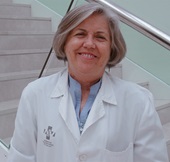The reflections on speciality medical education in paediatrics made by the Comisión Nacional de la Especialidad (National Committee of Specialities) focus on two lines of argument and areas of improvement: the changes needed in the paediatric specialist training programme and the challenges brought on by generational and social issues.1 This discussion is and will not be complete, in my opinion, without considering additional aspects. On one hand, the serious birth rate crisis in Spain: in 2023 there were a total of 322 075 births in Spain, with a 2.0% decrease compared to the previous year (6629 fewer births). Thus, the birth rate continues on the decreasing trend observed in the last decade (424 440 births in 2013).2 On the other hand, there is substantial inequality in the geographical distribution of paediatricians. According to the Medical Specialists Availability and Demand Report for the 2021–2035 period, there are 190.2 paediatricians per 100 000 children aged less than 15 years,3 one of the highest ratios in the European Union, yet there is a clear perception of a “lack” of paediatricians. I disagree with the opinion that competing career options in private health care pose a barrier to the balance between general paediatrics and speciality paediatrics training. On the contrary, in a free market, such competition can provide the motivation to improve working conditions and career advancement opportunities for paediatricians.
We must also be aware that paediatricians are children of their time. The challenges derived from generational and social changes affect us too: the growing proportion of female practitioners in the speciality (76.6% in the survey conducted by the Sociedad Española de Pediatría Extrahospitalaria y de Atención Primaria [SEPEAP, Spanish Society of Community and Primary Care Paediatrics])4 and the pursuit of work-life balance.
If we do not take all these aspects into account, we will only work on partial solutions to a complex and ever-shifting problem.





